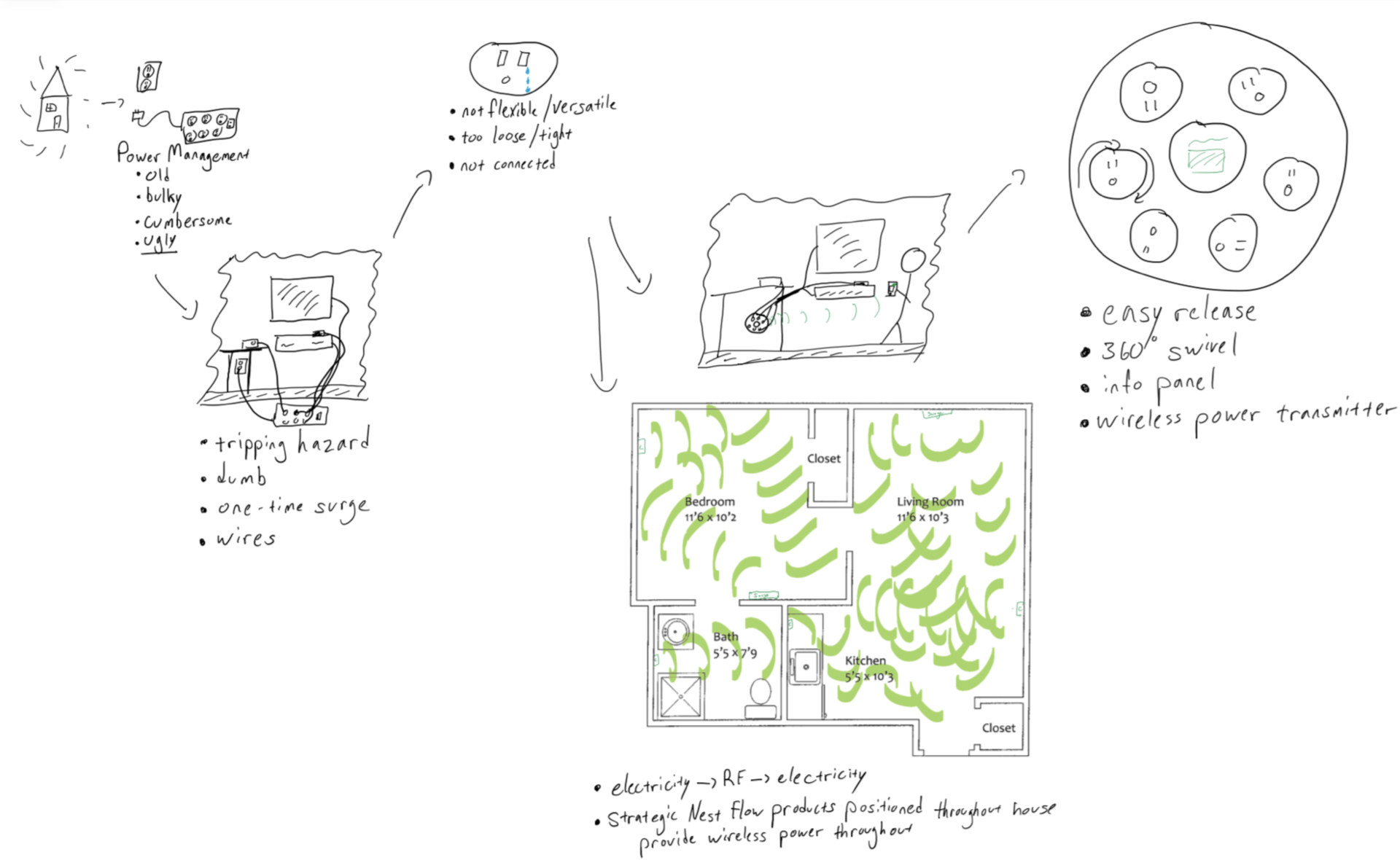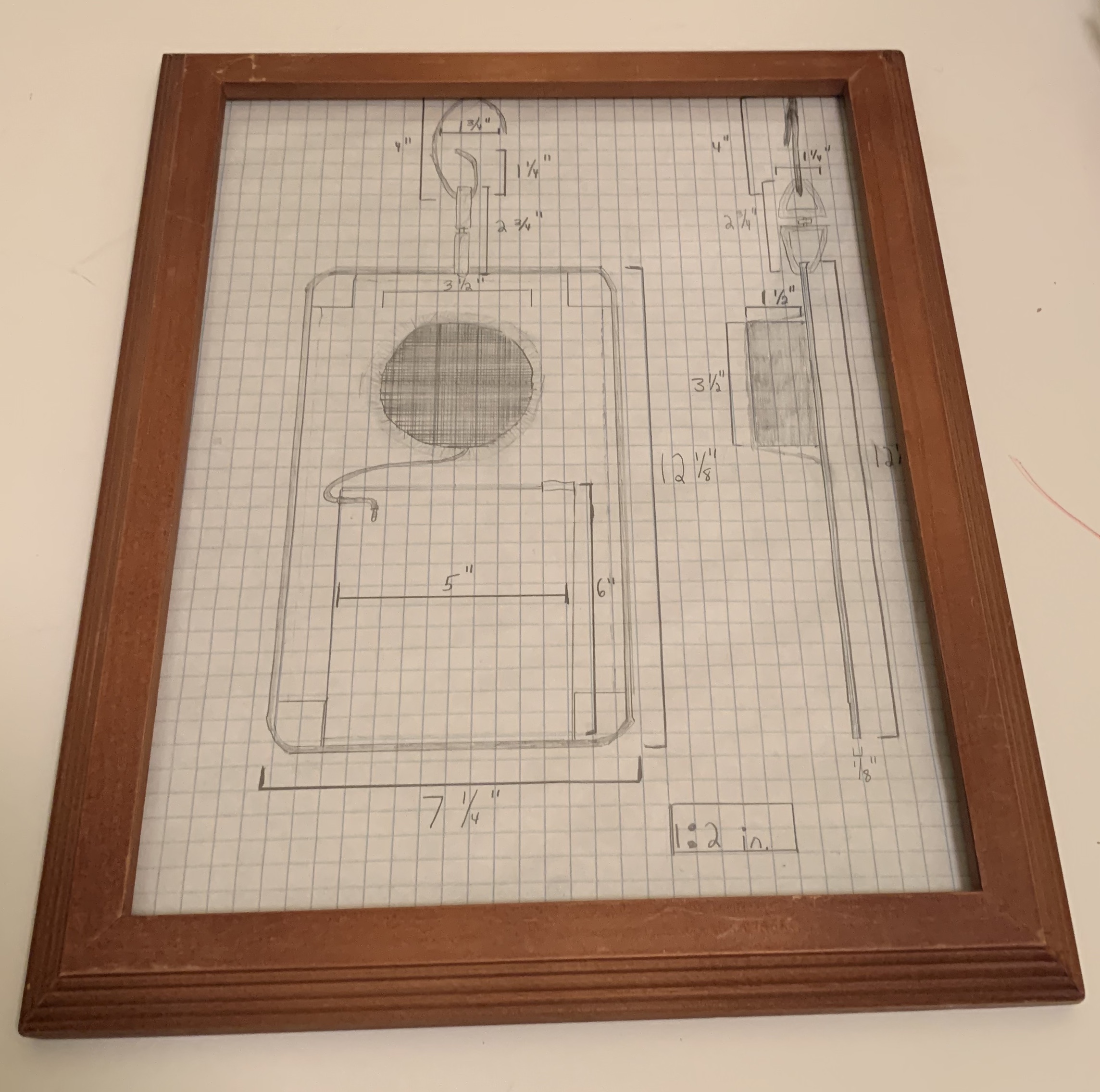Products
I’ve been creating products for 15 years. I’ve turned my personal ideas for side projects into reality and worked with Fortune 500 companies to imagine, design, and build products. I can’t wait to see what I get to build next.
Capital One, 2019 - Present
Not the actual product I’m building, but imagine it is!
The Background: I’ve spent almost two years at Capital One working as a Senior Product Manager in the Commercial Bank. I’m working with incredible people across Product, Engineering, and Design to tackle a very big problem in Commercial Banking. As you might imagine, the technology used by banks can be old and antiquated. In commercial banks, this tech can be downright ancient. Thankfully, Capital One embraces the future of commercial banking (hint: less PowerPoint presentations, more actionable data) and has begun a transition away from vendor applications towards in-house technology solutions. This is where I come in! The 3rd-party system we’ve been using is awful. It’s so bad that Underwriters will actually get their analysis and documentation done all offline, using email to communicate and PowerPoint/Excel to memorialize decisions. So let’s talk about the Product.
The Product: As part of a broader platform strategy, I was tasked with building a new approvals system from scratch. Because of how painful the old vendor system was to use, Approvals is something people put off until the end of the entire process, adding time and risk to the whole process. I see the Approvals process as more of a collaboration workflow than just simple documentation. The goal for me and my team was to enable users across the bank to work easily with each other and communicate more quickly and efficiently about decisions, both big and small, for a given deal. Without going into a lot of detail, here are a few highlights of what we did:
What once took 20 steps, now takes 3. It’s super fast to request approval when you need it.
In the old system, you had to search each and every time for the person you wanted to seek approval from – even if they’re your go-to approver, you had to search for them. We show your Top 5 and Most Recent approvers, so it’s quicker.
We take company policies and bring them to life on the page and even check for accuracy and enforcement. We’ll notify everyone involved if something isn’t quite right.
We’ve taken what once was a very specific use case for approving something and expanded to be more versatile across the bank. Want to get approval for borrowing the office stapler? That’s kinda weird, but you could use our system if you wanted to!
There’s so much more to this story, much of it being confidential, so I can’t go into too much detail. I’ll end by saying better collaboration and capturing the data and story that comes from that collaboration is coming to commercial banking!
IBM Extreme Blue, Summer 2018
The Background: I spent summer 2018 as a Product Manager at IBM in the Extreme Blue program. It was a challenging, exciting and rewarding summer! Rather than owning a small product feature or shadowing a product manager, I led my product team to build something awesome. I highly encourage anyone looking for an internship in programming or product management to check out Extreme Blue.
We worked under a tight timeline with almost no product specs, requirements and limited direction. We were give a broad problem and the ability to let our skills and imaginations run wild. It was a startup environment inside an enormous company. I loved every minute of it! You can read more about my summer experience at the Extreme Blue tumblr here.
Our project sponsor was internal, which made applying design thinking and lean startup principles to narrow in on the problem easy, because IBMers were easily accessible and very open to discussing their wants, needs, and pains. We started out with a hypothesis that we could leverage operational sources like Github and Slack to help employees find experts across the organization more easily. We quickly learned through the users that this wasn’t a large enough problem, so it was time to pivot, a necessary - but daunting - move when on a short timeline. By listening to our users, we found out that they had difficulty navigating the system and managing teams within such a large organization. If an organization doesn’t understand its informal networks, bad things happen. Informational silos form, employee retention goes down, and collaboration is inefficient and disorganized. With these pain points in mind, we started building.
The Product: We needed to make navigating such a large organization intuitive and generate such intuition at scale. To do this, we leveraged the vast amounts of collaboration data found in Github and Slack. By going directly to the sources of people’s communication, productivity, and collaboration, we could develop a picture of how people and teams collaborated with one another. We automated network analysis that is typically a result of extensive company-wide surveys that take a lot of time and money. What you see below is a cleansed version of the product we built this summer.
The user is given their collaboration network, typically who they work with.
The resulting visualization has one main component, the graph, and four minor ones, search field, help dialog, info pane, and filter controls. The graph contains relevant people in the user’s collaboration network and how they’re related to each other.
The thicker the lines between two people of the graph, the more collaborative they are.
When people are close together, it’s an indication that they frequently interact. When people float away from the pack, it means their connections with those in the graph is weaker. On its own, this may mean nothing. But if this trend is tracked over time, it might be an indication that a team member is less engaged and unhappy.
Ultimately, I had a blast working with my engineering team to build this product, and there’s a lot to this product and project that I didn’t cover such as my personas, product roadmap, business plan, and go-to-market plan.
Tepper Tech Innovation challenge, 2017 — Ceres Autonomous Grocery Delivery
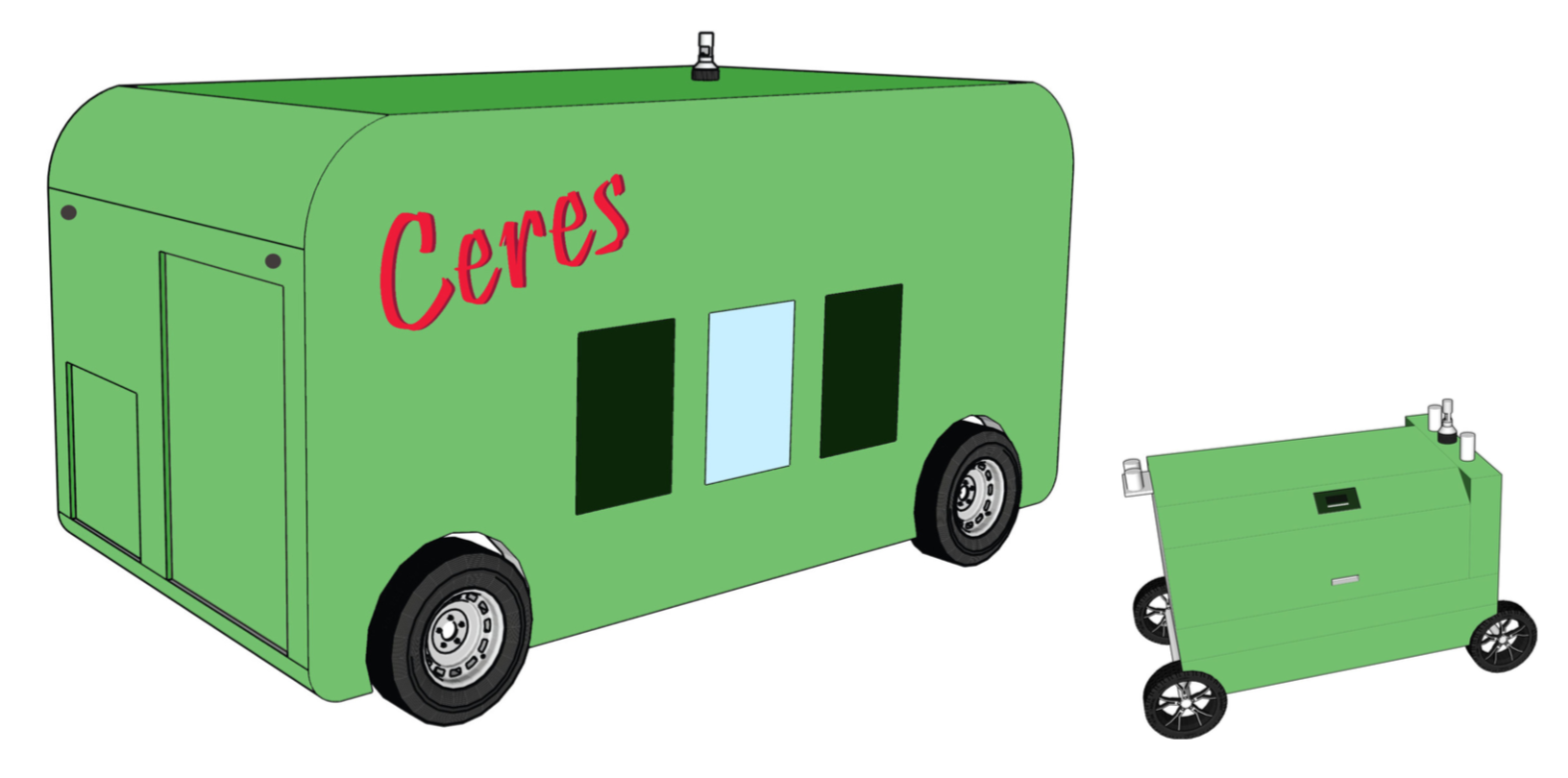
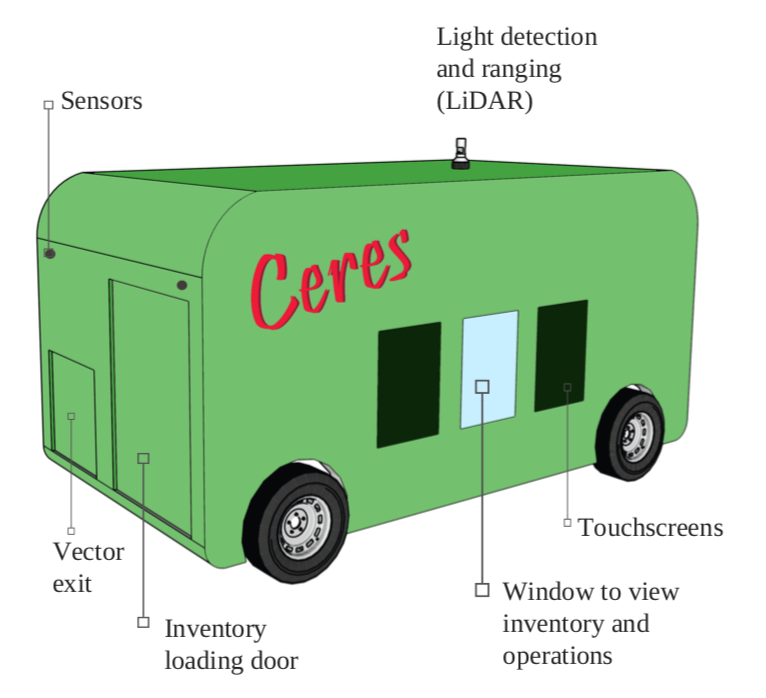
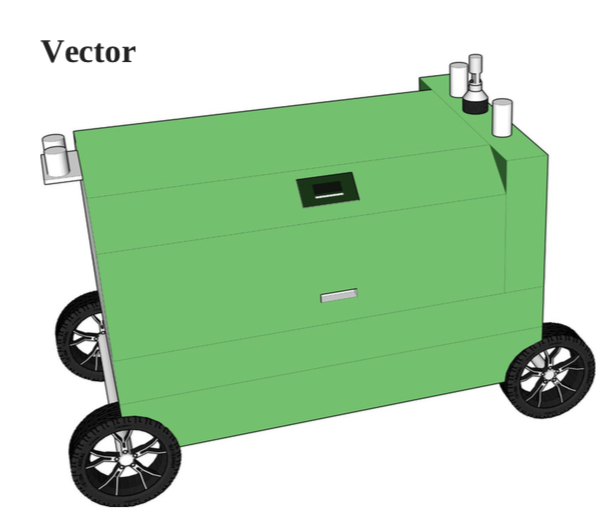
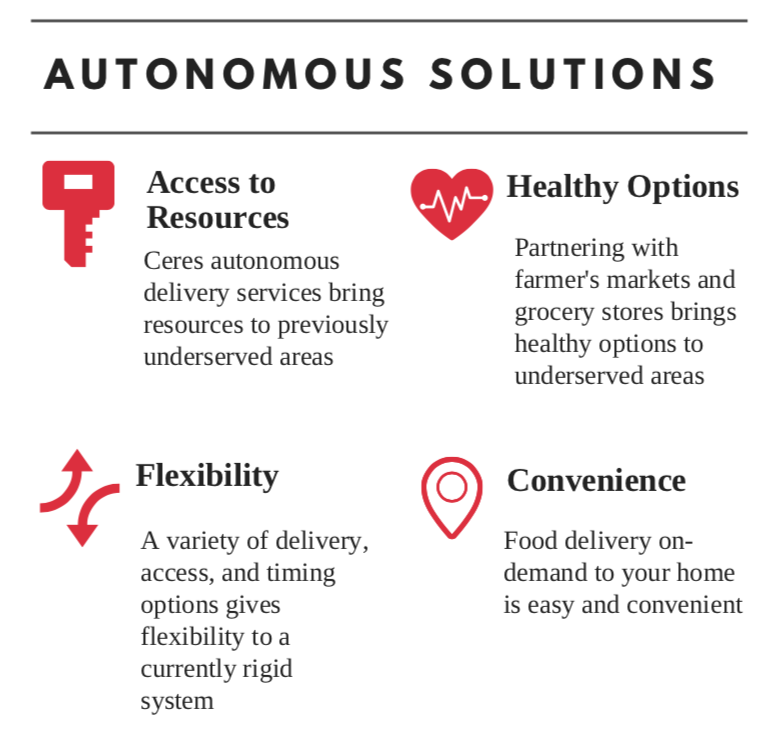
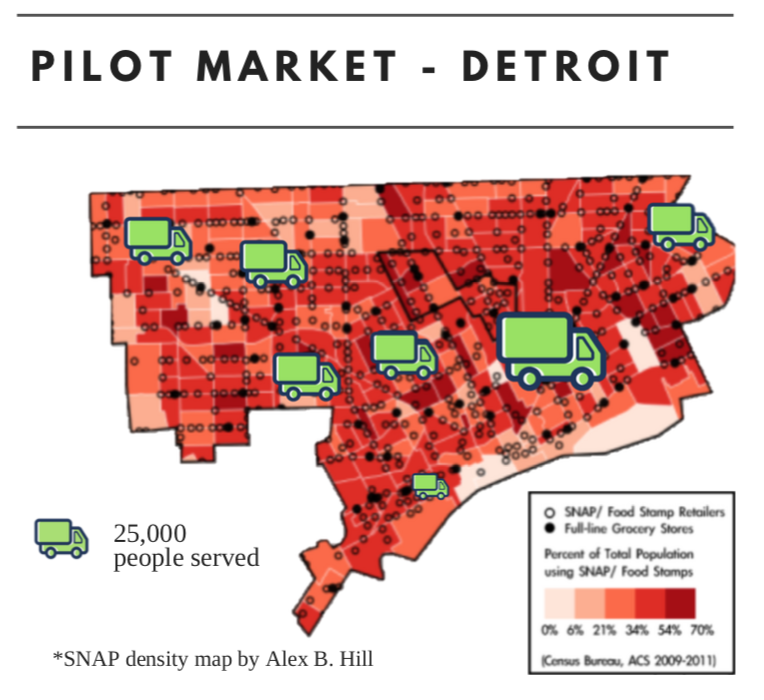
The Background: Each year, the Tepper Business & Technology Club hosts a nationwide case competition called the Tepper Tech Innovation Challenge (TIC). In 2017 I formed a team with three of the most talented people at Tepper to tackle our case prompt: The Future of Autonomous Technology.
We decided to focus on the issues of people who live in food deserts with limited access to healthy food options. Our research showed that traditional brick-and-mortar grocery stores weren’t being built where these people lived and that some had to travel great distances to get to a grocery store. We decided that we’d bring the grocery store to them.
The Product: With a little ingenuity, we were able to build a solution that brings quality groceries to food deserts. People in these markets have atypical work schedules and may even live in dangerous neighborhoods where it’s daunting to travel long distances to a grocery store. Considering all of this, we designed an autonomous grocery store delivery service called Ceres (a Roman goddess of agriculture of grain). Here’s how our product brief describes Ceres:
Each Ceres, along with her Vectors, will dock and charge in loading areas of partnering grocery chain locations In addition, Ceres will have a reservoir of free, clean water that anyone can access. Utilizing LiDAR and imaging technologies, Ceres and her Vectors will autonomously navigate streets and sidewalks. When Ceres arrives at the designated parking location, two Vectors will deploy for deliveries to the doors of customers and return to reload when necessary, making multiple trips during each hour-long stop. The remaining two Vectors will stay with Ceres and deliver groceries to on-site customers who ordered using Ceres’ touchscreen. An additional screen on the side of Ceres will notify customers how long it will be at its current location and how much inventory remains.
When the Vector meets the customer, it will use facial recognition technology to authenticate the customer and unlock for delivery. If the facial recognition fails, the customer can use a PIN to unlock the Vector. After an hour, all the Vectors will return, and Ceres will move on to the next location.
Grocery delivery, via human delivery driver, is now pervasive across the United States, and many companies are exploring autonomous grocery delivery as a technologically viable solution. Bitter validation? Maybe. Good for them. Really. You can see more about my work on Ceres here.
The Background: After talking to a Carnegie Mellon alum who worked as a Product Manager at Nest, I decided to theorize a new product for Nest and write a quick Product Brief to support it. Though I was familiar with some of Nest’s products, imagining a totally new product meant diving deep into their product portfolio, and competition. Nest creates practical, well-designed, intuitive home products that command a premium price. With this in mind, I wanted to extrapolate on the problems Nest solved with its existing products, which are very intuitive. I also wanted to be ambitious in the product I’d recommend and explore an entirely new, emerging, market: wireless power.
The Product: With the BIG assumption that Nest is actually capable of developing, or acquiring, commercially viable wireless power solutions, I imagined a solution that Nest could use to make a big splash into the wireless power market called Nest Flow. Nest Flow is actually a suite of wireless power products that focus on the power outlet and surge protector to deliver wireless power throughout a customer’s home. My brief also includes some high-level market information, potential risks and mitigation, and next steps.
The Background: While at Auburn University as an undergraduate, I completed a unique minor program called Business-Engineering-Technology, which brought business and engineering majors to take an idea and create a theoretical business around it. We even built a prototype that, unfortunately, hasn’t withstood multiple moves since college.
When it was time for my team to think of an idea to take through the program, I decided to take from my own personal experience and pitch a product that resolve the pain points of trying to listen to music in the shower. Workarounds included bringing my laptop or keeping a speaker dock inside the bathroom, but outside the shower, itself. This led to poor sound quality, volume issues and the risk of ruining my 2008 MacBook Pro. Something had to be done!
The Product: We started to think through the logistics of this problem and how we should solve it. I realized that simply listening to music inside the shower wasn’t enough value and that being able to control the music was equally as important. In looking at various materials that we might use to store, at this point in history, MP3 players, I realized that touch screens and any capacitive controls could be used through the plastic that’s typically found in shower liners. With that in mind, I designed a pouch system in which a device could easily be inserted from the opposite direction of shower stream. It wouldn’t be water proof but so water resistant that any moisture that did get in would be almost imperceptible.
I shopped around for battery-powered speakers and started sketching out what the product might look like. I even created simple product schematics that we could use to build the prototype, which I personally tested and used for a couple of years! Ultimately, while I didn’t commercialize Aquadio, it’s clearly a viable idea. 🤔
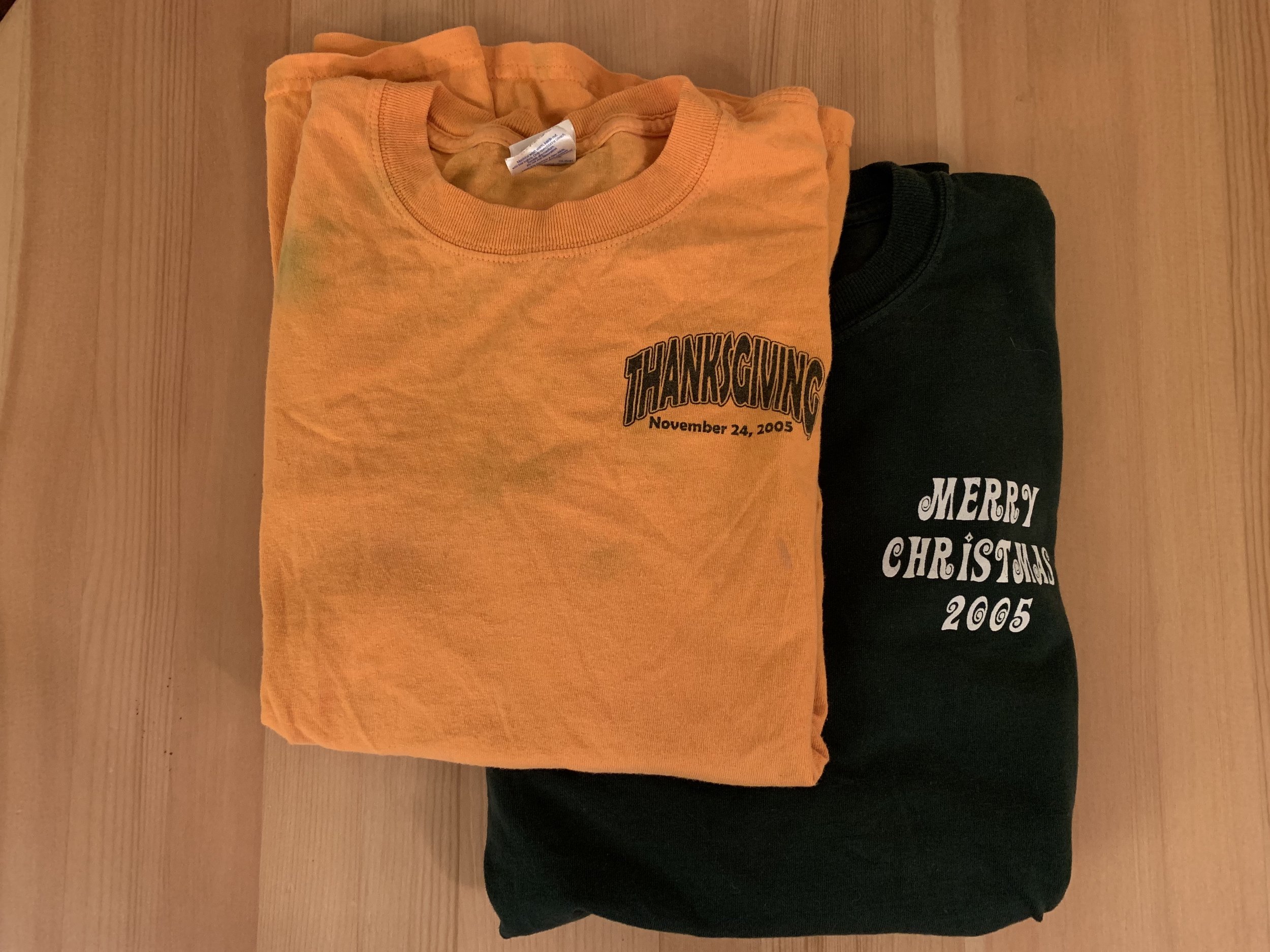
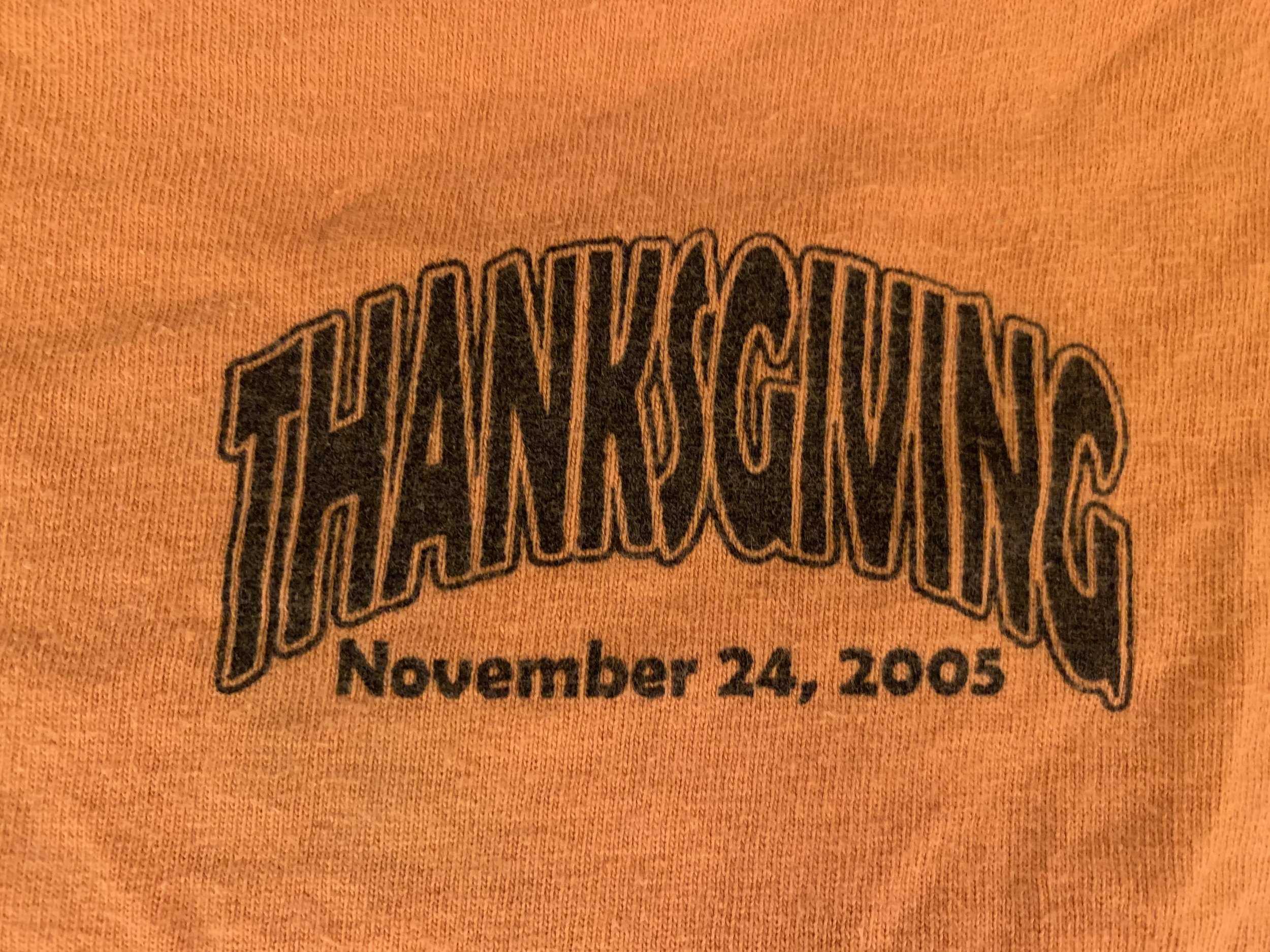


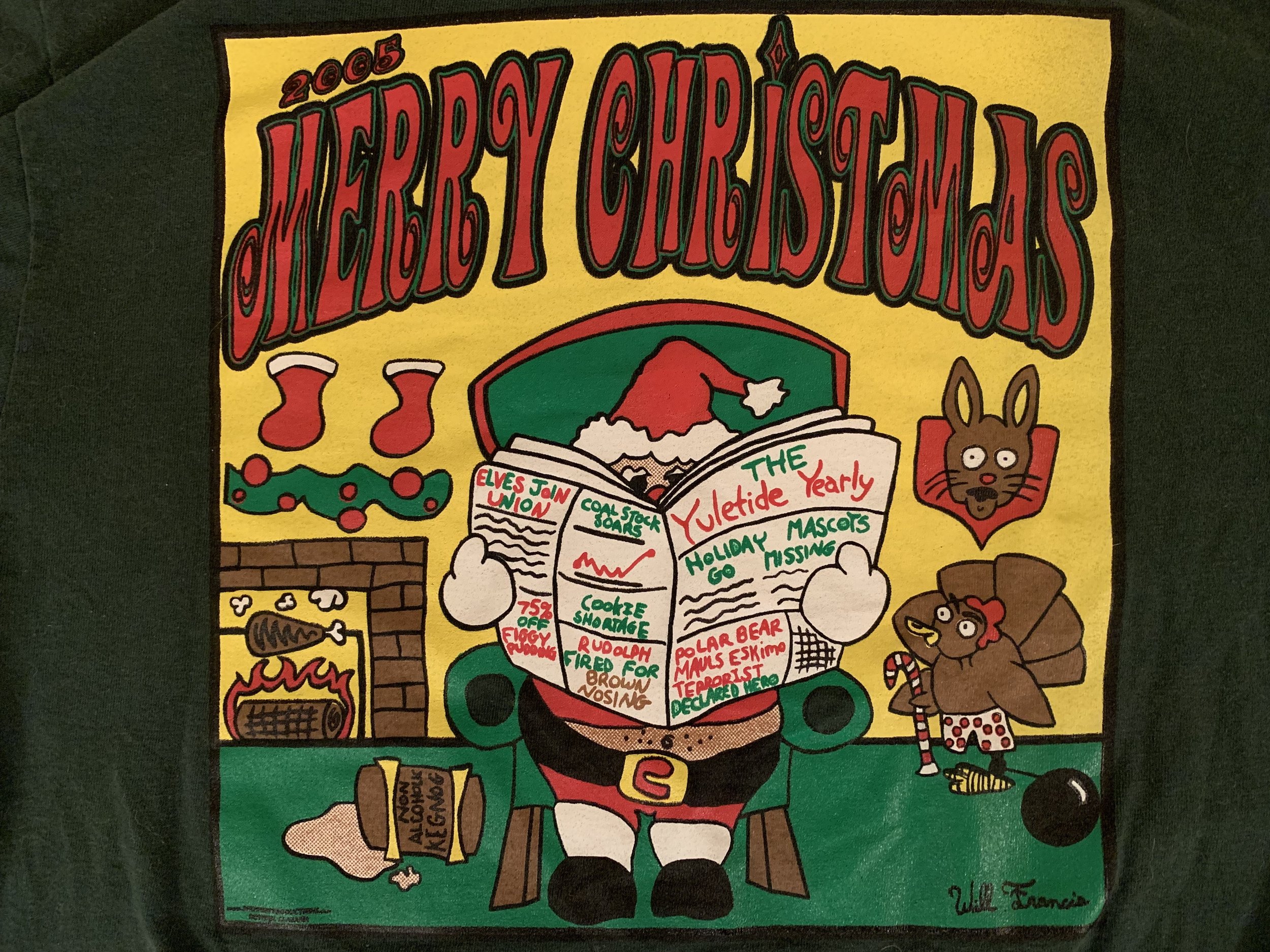
The Background: In 2005, I was a high school junior with a part-time job cleaning gunky, ink-filled screens at a screen printing shop in Dothan, Alabama. (It was a dirty job!) At my high school, themed t-shirts for school events were really popular. The school sold t-shirts to commemorate every home game. I joked that these football games were treated like holidays and maybe real holidays like Thanksgiving and Christmas deserved their own shirts! To my surprise, people were pretty receptive to such a silly idea and said they’d buy the shirts if I made them. 💡
The Product: I recruited a talented cartoonist friend who loved the idea. He sketched up Thanksgiving-themed cartoons and I talked to my boss at the screen-printing shop about offering me a discount on production. I took preorders to fund my endeavor, produced two shirts, but was ultimately shut down by the school administration. It was my first taste of disruption, even if it was just t-shirts!



